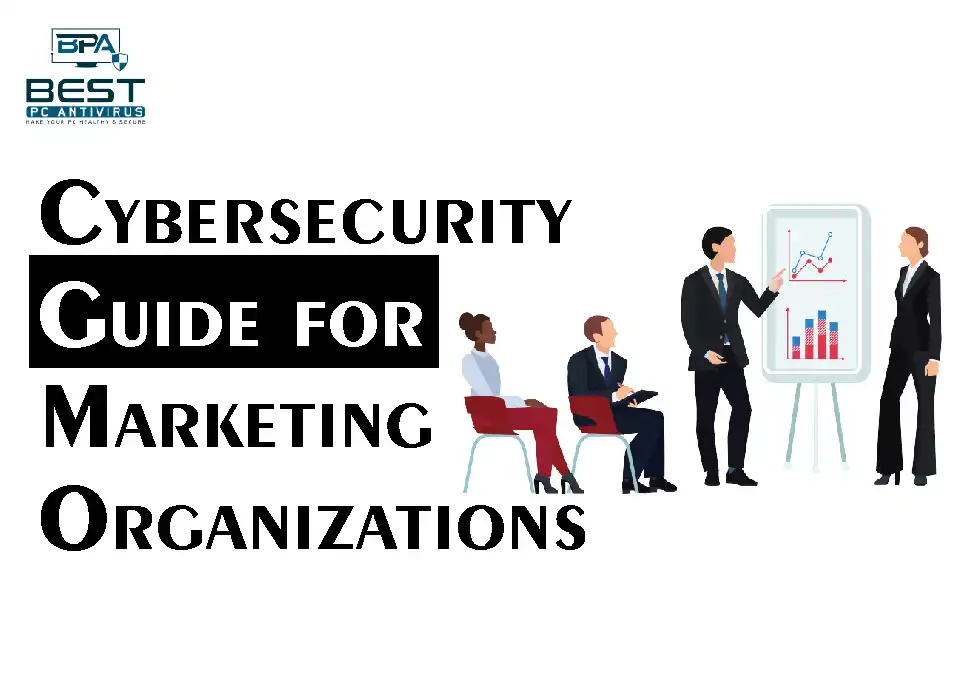Cybersecurity is the anti-biotics of all businesses of the 21st century, and Cybersecurity for marketing organizations are no exception. Especially considering that marketing organizations often have access to an abundance of information that their clients wouldn’t want to be leaked at any cost. Which just draws in more cyber criminals. Anyway, enough about the problems and dangers, now let’s talk about solutions. Here is a step-by-step process consisting of tried and tested tips that can and will help you be the knight in shining armour for your marketing organizations. So, let’s get started-
Step #1 Develop a Cybersecurity Plan
Developing a cybersecurity plan is a foundational step for any marketing organization to protect its digital assets from various cyber threats. This plan should provide a comprehensive roadmap to manage cybersecurity risks and mitigate any potential security incidents.
I bugged our cybersecurity consultant to compile some of the key components that should be included in a cybersecurity plan:
- Risk Assessment: Marketing organizations should assess the potential risks and threats to their digital assets. This can be done by identifying the type of data they store, the level of access granted to employees and third-party vendors, and the potential impact of a data breach or cyberattack.
- Security Policies: Once the risks have been identified, marketing organizations should develop policies that outline the rules and regulations for accessing and protecting sensitive information. For example, policies might cover password management, data backup and recovery, network security, and incident response procedures.
- Employee Training: Employees are often the weakest link in any cybersecurity plan. Therefore, it is crucial to provide regular training and awareness programs to educate employees on cybersecurity best practices. For example, employees should be trained on how to identify phishing emails, how to create strong passwords, and how to report any suspicious activity.
- Incident Response: Marketing organizations should have a well-defined incident response plan that outlines the steps to be taken in the event of a cybersecurity incident. This plan should include a clear chain of command, communication protocols, and a list of contacts for reporting and resolving incidents.
- Regular Updates and Testing: Cybersecurity threats are constantly evolving, and marketing organizations must keep their security plan up to date. This involves regular testing of security controls, updating policies and procedures, and keeping up to date with the latest threats and vulnerabilities.
Note: Our consultant asked me to add that the plan should be reviewed and updated regularly to keep up with new threats, and employees should receive regular training on best practices for protecting sensitive data. He also told me to tell you that he loves y’all.
Step #2 Secure the damned Network, please
Securing the network is like that step of the manual that you skip and end up having a missing row of drawers.
Securing the network is super important for cybersecurity for marketing organizations. Now see, a network is a group of interconnected computers, servers, and other devices that allow communication and data sharing within an organization. If the network is not adequately secured, it can lead to unauthorized access to sensitive data and other terrible security breaches.
Our consultant dude says that one of the best tools for securing the network is a firewall. A firewall is a network security device that monitors and filters incoming and outgoing network traffic based on predetermined security rules. It acts as a barrier between the internal network and the internet, allowing only authorized traffic to pass through. For example, if an employee tries to access a website known for phishing attacks or malware, the firewall will block the access and alert the security team.
Another great tool for securing the network is anti-virus software. Anti-virus software helps detect and remove malicious software or malware, which can compromise the network’s security. It works by scanning all incoming and outgoing network traffic and files for any known or unknown threats.
You can also use an Intrusion Detection Systems (IDS) for securing the network. IDS monitors network traffic for signs of security threats, such as hacking attempts or unauthorized access, and alerts the security team if it detects any suspicious activity. For example, if someone tries to access a server using an incorrect password multiple times, the IDS can detect this and alert the security team.
Step #3 Use Encryption, NOW
Encryption is another foundational aspect of cybersecurity for marketing organizations as it helps to protect sensitive information from unauthorized access or interception. Encryption involves the use of some algorithms that are as complex as your talking stages, and they use them to convert plaintext data into ciphertext, which is unreadable without a decryption key. This makes it extremely difficult for cybercriminals to access and misuse the data.
Marketing organizations can use encryption in several ways to secure their data. For example, they can use encryption to protect data in transit, such as when it’s being sent over the internet or between different locations. This can be achieved through the use of protocols such as Transport Layer Security (TLS) and Secure Sockets Layer (SSL), which encrypt data as it’s transmitted over the internet.
Encryption can also be used to protect data at rest, such as customer information stored in databases or financial records stored on a hard drive. This can be achieved through the use of software that encrypts data on the fly, as it’s being stored, or through hardware-based encryption, such as self-encrypting drives (SEDs).
For example, at our marketing organization, we use encryption to protect customer information stored in a database. That consultant dude could also make us use a database management system that supports encryption, such as Oracle Database or Microsoft SQL Server. Our database can be configured to automatically encrypt sensitive data as it’s stored, using a strong encryption algorithm such as Advanced Encryption Standard (AES). This ensures that even if a cybercriminal managed to access our database, they wouldn’t be able to read or use our encrypted data without the decryption key.
Another example would be a marketing organization that encrypts sensitive data before transmitting it over the internet. They could use TLS or SSL to encrypt data sent between their website and a customer’s browser, preventing cybercriminals from intercepting and reading the data. This would be particularly important if the data being transmitted included financial information, such as credit card numbers or bank account details.
Step #4 Regular Security Audits
Performing regular security audits is the star of all cybersecurity measures one could take. This step ensures that your marketing organization stays on top of its Cybersecurity threats. These audits are designed to identify vulnerabilities, risks, and gaps in an organization’s Cybersecurity defenses.
It’s highly recommended to have an independent third-party conduct these audits to provide an unbiased view of the organization’s security posture. The third party should be an experienced and qualified cybersecurity professional who understands the unique challenges and risks associated with marketing organizations.
The security audit should cover all aspects of the organization’s cybersecurity, including its infrastructure, network, applications, and data. The audit should assess the effectiveness of the organization’s security controls, policies, and procedures. The assessment should also identify areas where the organization can improve its Cybersecurity posture.
After the audit is complete, the third party should provide a comprehensive report that outlines the audit findings, recommendations, and remediation steps. The marketing organization should use this report to address any vulnerabilities, gaps, or risks identified during the audit.
For example, a marketing organization might conduct a security audit to identify vulnerabilities in its e-commerce website. The audit might reveal that the website is not using the latest encryption protocols, leaving sensitive customer data exposed. The third-party auditor would recommend that the organization upgrade its encryption protocols to protect customer data. The marketing organization could then take the necessary steps to implement these recommendations, reducing the risk of a data breach. Easy!
FAQs
Why is cybersecurity important for marketing organizations?
Cybersecurity is important for marketing organizations as they store sensitive data such as customer information and financial records. If this data is not protected, it can be misused by cybercriminals leading to reputational and financial damage.
What are the key components of a cybersecurity plan for marketing organizations?
The key components of a cybersecurity plan for marketing organizations are risk assessment, security policies, employee training, incident response, and regular updates and testing. A cybersecurity plan provides a roadmap to manage cybersecurity risks and mitigate any potential security incidents.
What tools can be used to secure the network of a marketing organization?
Tools that can be used to secure the network of a marketing organization are firewalls, anti-virus software, and Intrusion Detection Systems (IDS). A firewall acts as a barrier between the internal network and the internet, allowing only authorized traffic to pass through. Anti-virus software helps detect and remove malicious software or malware, while IDS monitors network traffic for signs of security threats and alerts the security team if it detects any suspicious activity.
How can encryption be used to protect data in a marketing organization?
Encryption can be used to protect data in a marketing organization by converting plaintext data into ciphertext, which is unreadable without a decryption key. Encryption can be used to protect data in transit, such as when it’s being sent over the internet or between different locations, or to protect data at rest, such as customer information stored in databases or financial records stored on a hard drive.
Why is it important to perform regular security audits?
Regular security audits are important for marketing organizations to ensure that their cybersecurity plan is up to date and effective in mitigating security incidents.
Security audits involve reviewing the security controls, policies, and procedures to identify any vulnerabilities and weaknesses that could be exploited by cybercriminals. Regular security audits can help identify and fix security issues before they become major security incidents.
Read More : How to Increase Your Internet Speed Right Now




